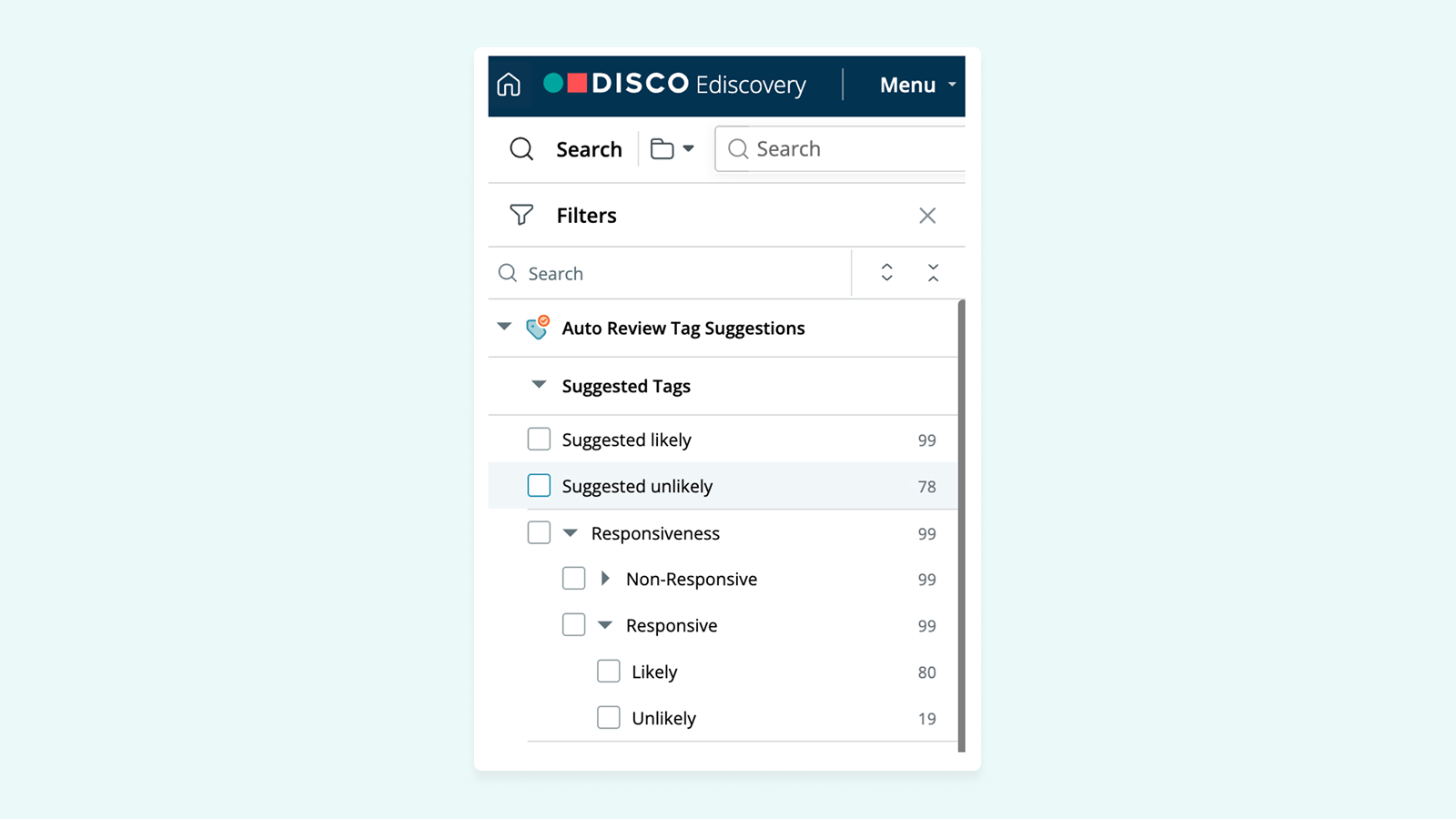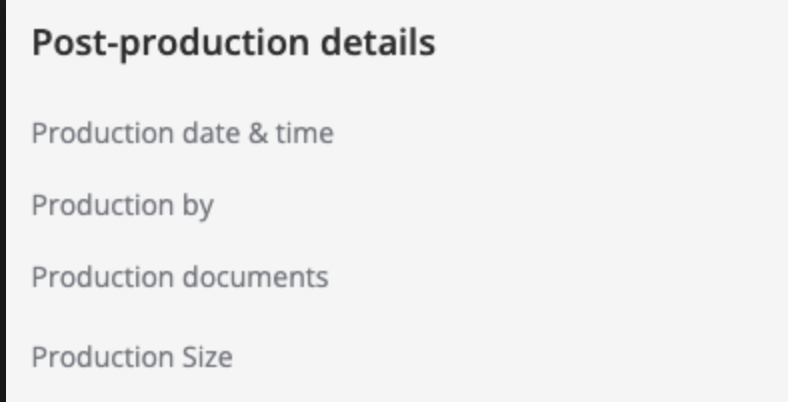⚡️ 1-Minute DISCO Download
Popular media would have us believe that trials, particularly trial by jury, are the way most cases are resolved. But legal professionals will tell you that that is simply no longer the case. When the Federal Rules of Civil Procedure went into effect in 1938, 20% of federal civil cases were resolved with a trial. In 2017, it was less than 1%. All this despite the increase in overall civil litigation over the last 85 years.
Why is this important? If cases aren’t going to trial, then the discovery process represents most of the time and expenses incurred in a given case. But, as any lawyer will tell you, this process can quickly go off the rails resulting in expensive, risky, and overly complex discovery efforts. An electronically stored information (ESI) agreement can help parties limit the scope of discovery, mitigate the risk of disputes, help reduce unnecessary spend, and ensure that the parties obtain the information necessary to reach an earlier resolution.
10 tips for successfully negotiating an ESI agreement and managing discovery costs in civil litigation
Negotiating an ESI agreement can be complicated, but you can achieve a favorable outcome with the right approach. Here are 10 things to keep in mind.
1. Know what you need to address
Understand the legal requirements for discovery before planning your negotiation strategy. This includes understanding the relevant rules of civil procedure, case law, standing orders, and local rules. Familiarizing yourself with the legal requirements will help you negotiate terms that comply with the law and ensure you meet your priorities, goals, and objectives.
2. Think through discovery for your entire matter
Understand what your ultimate needs are in your case and how you’ll get there before the start of negotiations. Do you need to depose 100 witnesses, or will 10 do? Do you need access to data outside the country? This will help you get to those few critical documents, and impactful testimony that will drive case resolution, not to mention put you in a better position to negotiate terms that suit your needs.
3. Defensibly and proportionally preserve and collect data
Do your homework and be prepared to address preservation and collection. This includes identifying potential custodians, data sources, and time frames for your client and opposing parties. Come to the table prepared with a proposed scope of preservation and collection to match your party’s capabilities and interests, including an analysis of proportionality factors (which you may need to revisit as the negotiation progresses).
4. Everything is not email
the legal system is struggling to figure out how to handle data from apps that don’t map neatly to paper-like discovery. These include cloud-based storage and collaboration apps like Slack, text messages, social media, and encrypted communication tools. Make sure you give yourself time to investigate what data sources exist, what preservation and export capabilities you’ll need, and any limitations that might impact useability when produced. You don’t want to wait until the routine deletion of data has been running for an additional year before you think about it.
5. Strategically negotiate review methodologies for maximum impact
how the parties retrieve and produce relevant information can be one of the most challenging, complex, and expensive pieces for parties to reach an agreement on – especially early in a case when many of the issues and players are not fully understood. Unfortunately, this is precisely when most ESI agreements are negotiated. Plan how to approach reviews to prevent later disputes, including whether to disclose the technology and methodology used to retrieve documents for production, or if you want opposing parties to reveal the same to you.
6. Use technology to your advantage
technology can help streamline the ESI production process and reduce costs. You should consider using technology-assisted review and other software tools to help you identify relevant ESI and minimize the cost of review and production. Be prepared to discuss the technologies that can be used and which require agreement before implementation.
7. Protect confidentiality
confidentiality is often a key concern in ESI agreement negotiations. This includes ensuring that your ESI agreement reflects and complies with your protective orders, that you’re aligned on what can be redacted and on how redacted documents will be produced, and how to handle logging withheld information.
8. Avoid inadvertent disclosure of privileged information
with the volume of information involved in discovery today and the variety of forms it may take, inadvertent disclosure of protected information looms large. Leverage the ESI negotiation process to take advantage of the protection against inadvertent waiver provided by Federal Rules of Evidence 502(d), or state equivalents, define the clawback process, and how disputes around privilege will be resolved to protect your client’s data.
9. Define production specifications for easy-to-use data
disputes often arise between the parties due to issues surrounding the manner and sufficiency of productions. Agreeing to the format of productions and how certain types of materials will be produced can shortcut such disputes and ensure that when you get data, it will actually be useful and that your technology will be capable of handling it all.
10. Be prepared to compromise
negotiating an ESI agreement involves give-and-take. Be prepared to compromise on some issues to achieve your overall objectives. Be clear about what you're willing to compromise on and what's non-negotiable. Develop a negotiation strategy that considers your goals and priorities, the interests of the stakeholders, and the potential issues that could arise during the negotiation process. Consider including a dispute resolution process in your agreement to help address any lingering issues throughout the life of your case.
Bonus tip:
Seek outside help if necessary
negotiating an ESI agreement can be challenging, especially if you lack the expertise or resources. On top of that, the volume of ESI and the growing complexity of privacy schemes impacting a single corporation can be overwhelming. That’s where an ediscovery liaison can help — a dedicated expert prepared to address the impact of the intricacies of technology and data on the discovery process. Who should you consider for the liaison position? The liaison could be an ediscovery expert from each law firm’s case team, someone from within a corporate in-house legal team, corporate IT resources, or even a legal technology provider that has consultants on staff.
Negotiating an ESI agreement can be complex and time-consuming, but you can achieve an advantageous outcome with the right approach. By following these tips, you'll be better prepared to negotiate terms that align with your goals and priorities while complying with the legal requirements.
Interested in more tips and tricks? Get in touch to learn how our legal software and services can take your offerings to the next level.






%20(1).jpeg)








.png)